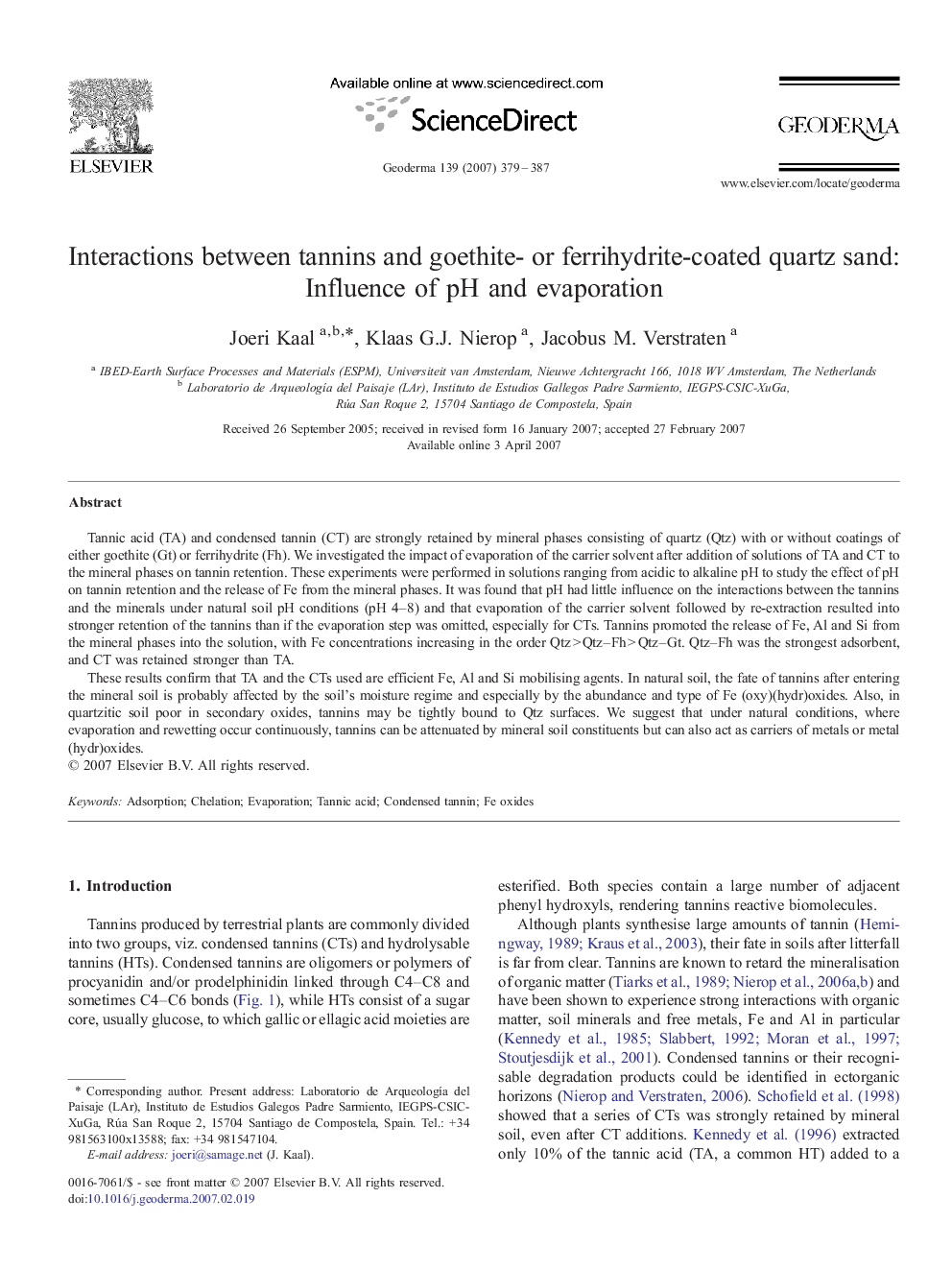| Article ID | Journal | Published Year | Pages | File Type |
|---|---|---|---|---|
| 4575358 | Geoderma | 2007 | 9 Pages |
Tannic acid (TA) and condensed tannin (CT) are strongly retained by mineral phases consisting of quartz (Qtz) with or without coatings of either goethite (Gt) or ferrihydrite (Fh). We investigated the impact of evaporation of the carrier solvent after addition of solutions of TA and CT to the mineral phases on tannin retention. These experiments were performed in solutions ranging from acidic to alkaline pH to study the effect of pH on tannin retention and the release of Fe from the mineral phases. It was found that pH had little influence on the interactions between the tannins and the minerals under natural soil pH conditions (pH 4–8) and that evaporation of the carrier solvent followed by re-extraction resulted into stronger retention of the tannins than if the evaporation step was omitted, especially for CTs. Tannins promoted the release of Fe, Al and Si from the mineral phases into the solution, with Fe concentrations increasing in the order Qtz > Qtz–Fh > Qtz–Gt. Qtz–Fh was the strongest adsorbent, and CT was retained stronger than TA.These results confirm that TA and the CTs used are efficient Fe, Al and Si mobilising agents. In natural soil, the fate of tannins after entering the mineral soil is probably affected by the soil's moisture regime and especially by the abundance and type of Fe (oxy)(hydr)oxides. Also, in quartzitic soil poor in secondary oxides, tannins may be tightly bound to Qtz surfaces. We suggest that under natural conditions, where evaporation and rewetting occur continuously, tannins can be attenuated by mineral soil constituents but can also act as carriers of metals or metal (hydr)oxides.
